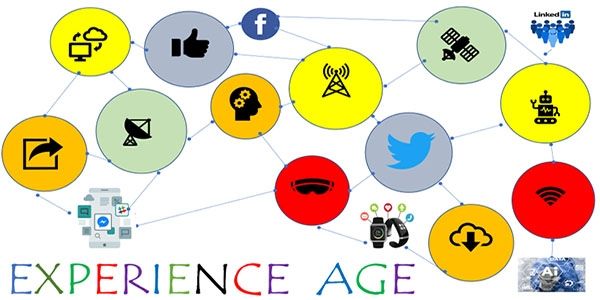Does this sound like you?
“I want to engage my staff to get involved in improving the way our business operates, but everything I try just doesn’t seem to have an impact”
If so, you are definitely in the majority. Businesses in almost every industry and sector struggle with getting staff involved in their continuous improvement initiatives, and wrestle with how to better engage their teams in efforts to improve business processes. And even if they do get that figured out and off the ground, it often introduces a new set of challenges; sustaining that momentum.
First, the good news. Your employees WANT to be given the chance to improve your business, to have a voice in process improvement. Now the bad news (or at least the harder news); your management team needs to make it easy for their teams to do so.
So then, how can you make the path improvement easier for your teams? Here are my top 10 tips, tactics and approaches to empower and enable your staff (and you) excited about driving business process improvements, and on to becoming continuous improvement ambassadors for your organization.
1. Acknowledge the Room for improvement
Q: Do you know what the biggest room in the world is?
A: The room for improvement.
Dad jokes aside, sometimes just acknowledging to your staff that there are opportunities to improve, not just the business, but their way of working, can be of great help in getting them on board. Every business faces challenges, and ignoring them, spinning them, and sweeping them under the rug does nothing to help. Acknowledge the problems, see them as opportunities, and meet them head on. To really amplify the message, create a safe environment for your staff to bring opportunities forward, and even contribute to solving them.
2. Communicate
One of the best ways to build trust with your team members is to be open and transparent with your intentions, your projects, and your progress. Not only will this keep the idea of continuous improvement it top of mind, but your communication tools can be used as a vehicle to accelerate your efforts and impact.
3. Offer employee training
The impact of offering training to your staff is two-fold. First, it ensures your teams have the proper training, ongoing support and the resources they need to get involved with and contribute to, your continuous improvement initiatives. Second, and likely more important (to them at least), is that it also demonstrates a willingness to invest in them and their careers.
4. Make it a part of everyone’s job
“What gets measured gets done.” While the source of that statement is debatable, the sentiment is not. If you want to drive continuous improvement in your organization, make it personal. Establish individual and team performance outcomes and expectations, including KPIs, to obtain the desired effect. The best way to do that is to include continuous improvement objectives in every job description, as well as annual/quarterly/etc. personal development programs.
5. Have leadership set the tone
Most sustainable business transformations start at the top, and trickle down. So, having your organization’s senior management buy-in to continuous improvement, and in more than words, goes a long way in determining success. Their words must be backed up with actions, and those actions and support should be visible to your entire operation. This ensures a strong and visible network of leaders to generate momentum for process improvement initiatives.
6. Make it fun, but appeal to the spirit of competition
Recognizing that staff engagement in process improvement can be difficult to maintain, many companies have appealed to people’s competitive instincts by holding competitions, both within teams and across their entire organizations. Some businesses have even created games such as process improvement sprints and hackathons, in the spirit of competition.
7. Enable collaboration
Take the “One Company” approach to break down existing silos. The best way I’ve found to do this is to use the customer’s perspective on your business. Do you have a lot of segmented processes, a lot of handoffs, and perhaps overly specific and restrictive job descriptions? Guess what…your customer doesn’t care. They want a problem solved or a need addressed. They see your organization as a single entity, and not a collection of individualized departments and silos.
Further, make sure you don’t squeeze the balloon of pain. In a siloed organization, a lot of problems are solved in one business unit by squeezing the pain up or downstream. Not unlike one of those balloons that clowns use to make balloon animals. When you squeeze the middle, the air doesn’t disappear; it moves to the rest of the balloon. So don’t solve a problem by making it someone else’s.
8. Enforce accountability
Sometimes simply giving your staff the autonomy and resources needed to map, review and ultimately own the processes they have to deal with every day is enough to start them down the road of implementing their improvement ideas. That’s not to say they should have the freedom to do whatever they want, whenever they want, to whomever they want. You should enforce timelines, but freedom, to force accountability. This will help identify who is really interested in contributing. Everyone wants to have a say when there are no consequences, but when I need to own my actions, only the team members that really want to try making a difference will step up. That being said, you want to empower but not abdicate; make it clear when your team should reach out for help or approval.
9. Recognize and reward
As a general rule, good work should be recognized and celebrated. And by that, I don’t mean a party every time someone sends an email. But ensure that you are giving recognition where and when recognition when it is due. For example, I used to hold a “graduation” ceremony from my classes of Lean Six Sigma Green Belts. To me it wasn’t about grad caps and cupcakes, but was more about giving the new Green Belts the opportunity to present their work to their leaders, and be recognized for their efforts. I now make this a mandatory milestone for all training classes. It’s important to acknowledge all of the good work, efforts, failures, and completion of milestones (like completing training). It all creates a virtuous cycle of learning and success.
10. Offer bribes
Consider this one an absolute last resort. It is, at best, a short-term tactic to drive motivation and participation in your staff. Providing small but meaningful incentives like pizza parties, extra vacation days, or event or movie tickets, may give you a boost. But a warning…use of these doesn’t actually solve your engagement problem, and may actually serve to negatively impact it when these tactics go away. And a second warning…use cash bonuses as an absolute last move, as
The thinking on business process improvement has shifted in recent years. It used to be one that focused on the application of rigid tools and methodologies, and that discounted the role of staff, to the more modern approach, which is one that is better at harnessing the real drivers of change in your organization: engaged people and teams, who want to do good work, and are driven to improve and succeed.
When you instill a strong improvement culture in your organization, and equip and empower an engaged staff with the right tools, learning, and attitude, you can turn their efforts into real, tangible improvements that make your business more efficient and effective, and improve the engagement of staff. All that leads to significant, positive changes for your teams, your customers, and your bottom line.




